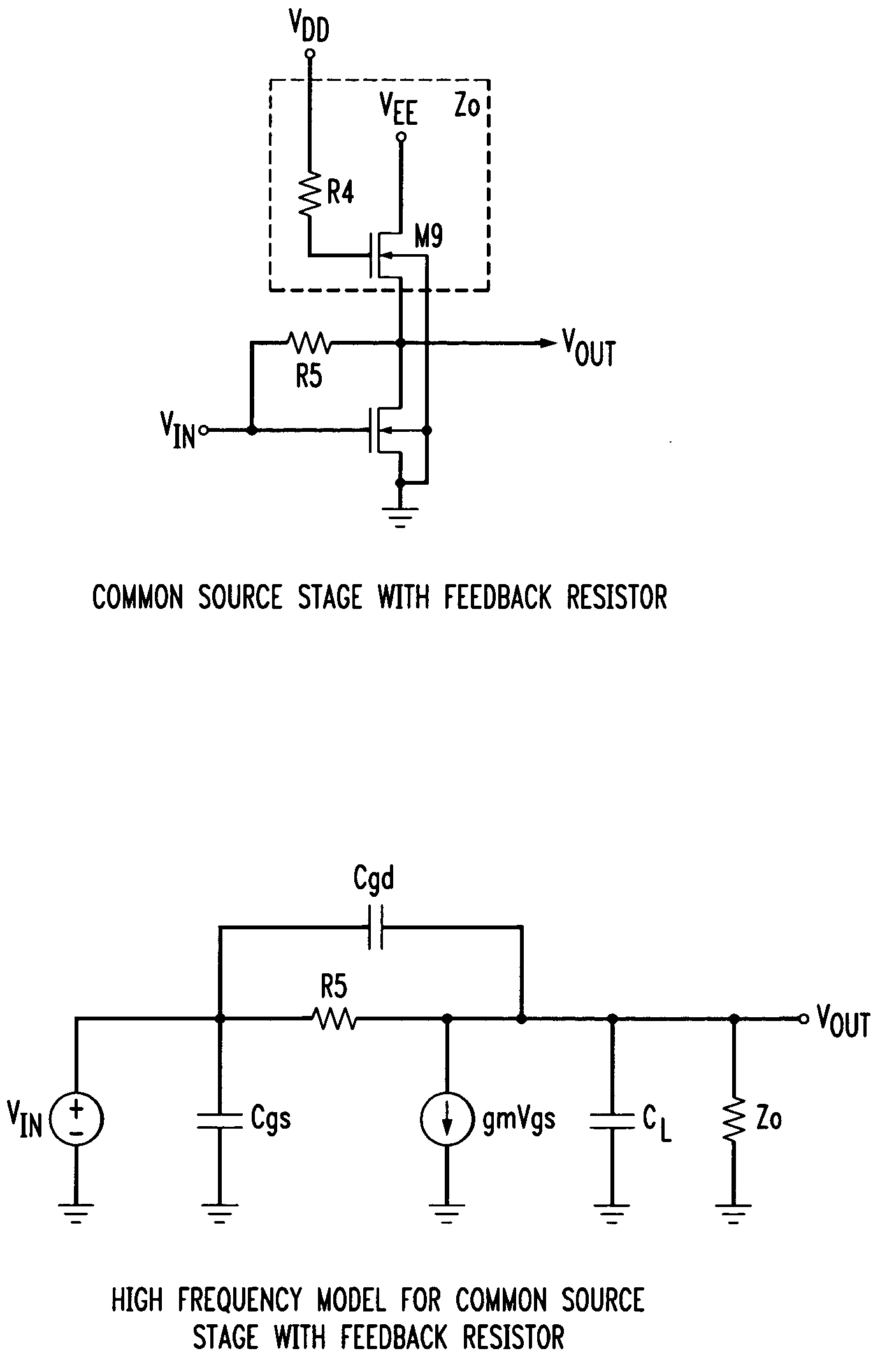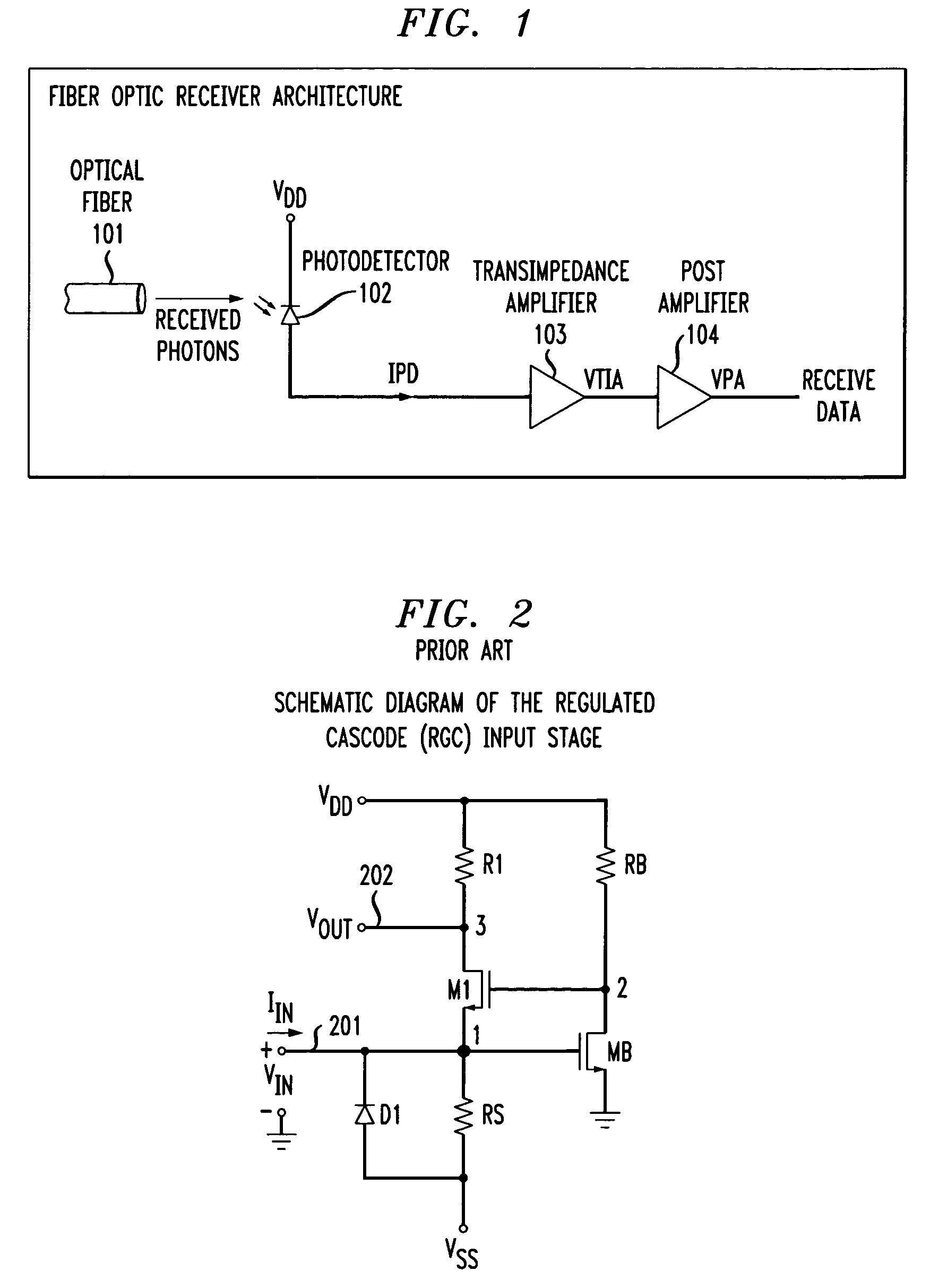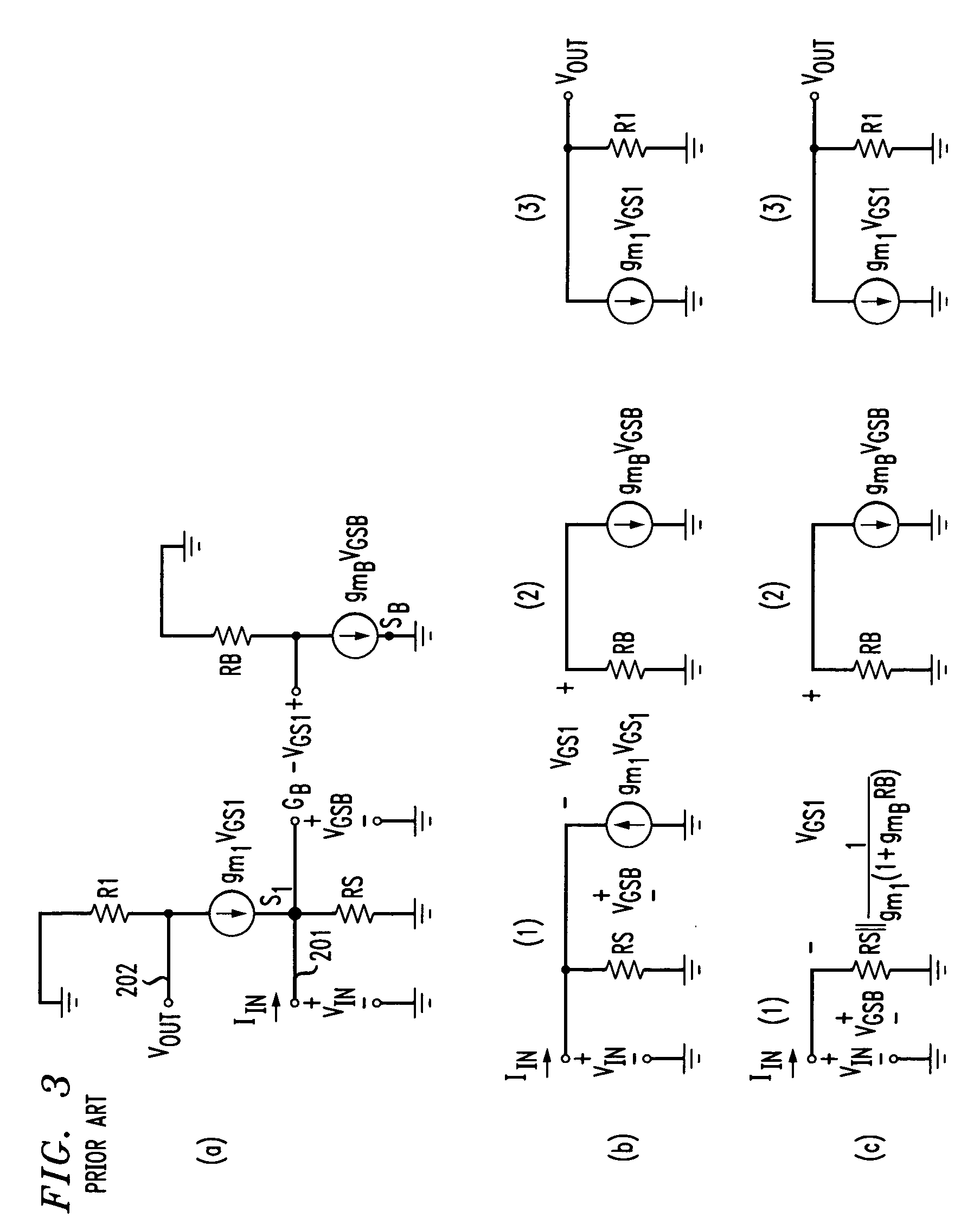Transimpedance amplifier
a technology of transimpedance amplifier and amplifier, applied in the field of electrical equipment, can solve problems such as wide bandwidth, and achieve the effects of wide bandwidth, large output voltage, and reduced equivalent input noise curren
- Summary
- Abstract
- Description
- Claims
- Application Information
AI Technical Summary
Benefits of technology
Problems solved by technology
Method used
Image
Examples
Embodiment Construction
FIG. 6 depicts a block diagram of a transimpedance amplifier in accordance with the illustrative embodiment of the present invention. The transimpedance amplifier 400 comprises transimpedance stage 401 and voltage gain stage 402.
FIG. 7 depicts a schematic diagram of a transimpedance amplifier in accordance with the illustrative embodiment of the present invention. The illustrative embodiment comprises: eight resistors, R1 through R6, RS, and RB, and ten transistors, M1 through M10. In accordance with the illustrative embodiment, transistors M1 through M10 are N-Type Enhancement mode transistors, as are well-known to those skilled in the art.
Transimpedance stage 401 has a terminal labeled INPUT into which the input current is injected. This INPUT terminal is electrically connected to the gate of transistor M3, the source of transistor M2, and one terminal of resistor RS. The second terminal of RS and the source terminal of transistor M3 are connected to ground potential. The gate t...
PUM
 Login to View More
Login to View More Abstract
Description
Claims
Application Information
 Login to View More
Login to View More - R&D
- Intellectual Property
- Life Sciences
- Materials
- Tech Scout
- Unparalleled Data Quality
- Higher Quality Content
- 60% Fewer Hallucinations
Browse by: Latest US Patents, China's latest patents, Technical Efficacy Thesaurus, Application Domain, Technology Topic, Popular Technical Reports.
© 2025 PatSnap. All rights reserved.Legal|Privacy policy|Modern Slavery Act Transparency Statement|Sitemap|About US| Contact US: help@patsnap.com



